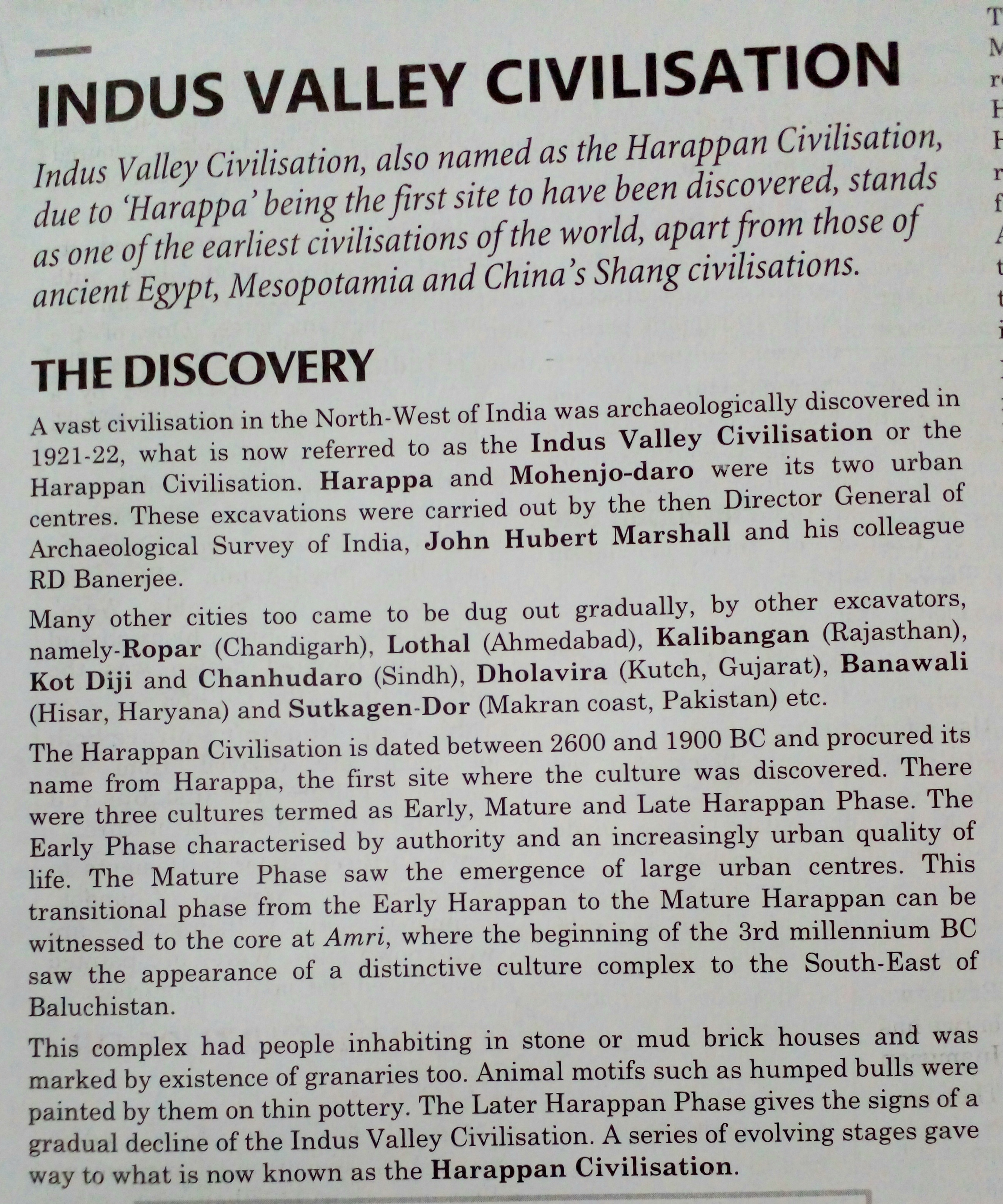Page 1 :
INDUS VALLEY CIVILISATION, , Indus Valley Civilisation, also named as the Harappan Civilisation,, due to Harappa’ being the first site to have been discovered, stands, as one of the earliest civilisations of the world, apart from those of, ancient Egypt, Mesopotamia and China’s Shang civilisations., , THE DISCOVERY, , A vast civilisation in the North-West, 1921-22, what is now referred to as th, Harappan Civilisation. Harappa and, centres. These excavations were carried ou, Archaeological Survey of India, John Hubert, RD Banerjee., , Many other cities too came to be dug out gradually, by other excavators,, namely-Ropar (Chandigarh), Lothal (Ahmedabad), Kalibangan (Rajasthan),, Kot Diji and Chanhudaro (Sindh), Dholavira (Kutch, Gujarat), Banawali, (Hisar, Haryana) and Sutkagen-Dor (Makran coast, Pakistan) etc., , The Harappan Civilisation is dated between 2600 and 1900 BC and procured its, name from Harappa, the first site where the culture was discovered. There, were three cultures termed as Early, Mature and Late Harappan Phase. The, Early Phase characterised by authority and an increasingly urban quality of, life. The Mature Phase saw the emergence of large urban centres. This, transitional phase from the Early Harappan to the Mature Harappan can be, witnessed to the core at Amri, where the beginning of the 3rd millennium BC, saw the appearance of a distinctive culture complex to the South-East of, , of India was archaeologically discovered in, e Indus Valley Civilisation or the, Mohenjo-daro were its two urban, t by the then Director General of, Marshall and his colleague, , Baluchistan., , This complex had people inhabiting in stone or mud brick houses and was, marked by existence of granaries too. Animal motifs such as humped bulls were, painted by them on thin pottery. The Later Harappan Phase gives the signs of a, gradual decline of the Indus Valley Civilisation. A series of evolving stages gave, way to what is now known as the Harappan Civilisation., , ed, , a acai ee ie el, ee























































